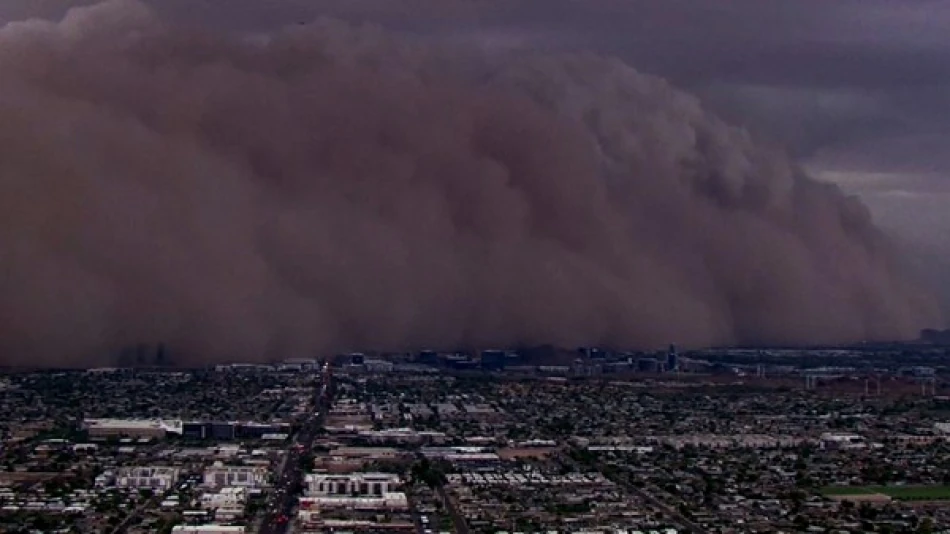
Phoenix, AZ Plunges into Darkness: Unexpected Power Outage Disrupts City
Massive Dust Storm Engulfs Phoenix, Exposing Arizona's Growing Vulnerability to Extreme Weather
A towering dust storm swept through Phoenix, Arizona on Monday, plunging the desert metropolis into darkness and crippling critical infrastructure across the region. The dramatic weather event knocked out power to thousands, grounded flights, and left nearly two million residents grappling with hazardous conditions—highlighting the increasing intensity of seasonal weather patterns that could reshape urban planning in America's fastest-growing cities.
The Anatomy of a Desert Apocalypse
The dust storm, known locally as a haboob, formed when a collapsing thunderstorm sent cold air crashing into the desert floor, launching massive walls of dust thousands of feet into the sky. The phenomenon created an otherworldly scene reminiscent of science fiction films, with towering brown clouds advancing toward aircraft at Phoenix Sky Harbor International Airport.
Phoenix officials took to social media platform X to warn residents: "This monsoon dust is no joke... please stay safe," accompanied by images showing the apocalyptic wall of dust bearing down on the city's aviation infrastructure.
Infrastructure Takes a Hit
The storm's impact was immediate and widespread. Local media reported that portions of Phoenix airport's roof sustained damage, while Trico Electric reported power outages affecting 7,200 customers. In nearby Gilbert, police warned that downed trees and malfunctioning traffic signals had created dangerous driving conditions throughout the area.
A Recurring Challenge in America's Desert Boom Towns
While dust storms are a regular feature of Arizona's dry monsoon season, Monday's event underscores the vulnerability of rapidly expanding desert cities to extreme weather. Phoenix has grown by over 11% since 2010, making it one of America's fastest-growing metropolitan areas, yet its infrastructure increasingly faces tests from intensifying seasonal weather patterns.
The National Weather Service warned that the Monday storm was just the beginning, forecasting additional thunderstorms through Thursday before conditions stabilize by Friday. This pattern reflects the broader challenges facing Southwestern cities as climate patterns shift and urban development accelerates in traditionally harsh environments.
Economic and Planning Implications
For urban planners and investors, events like Monday's dust storm represent more than temporary inconveniences. They signal the need for enhanced infrastructure resilience in desert metropolitan areas that continue attracting businesses and residents with promises of year-round sunshine and lower costs of living.
The aviation sector faces particular challenges, as Phoenix Sky Harbor serves as a major hub for Southwest Airlines and handles over 40 million passengers annually. Dust storms can ground flights for hours and damage sensitive equipment, creating ripple effects across national air travel networks.
The New Normal for Desert Cities
As climate scientists document increasing variability in monsoon patterns across the American Southwest, cities like Phoenix may need to fundamentally rethink their approach to seasonal weather preparation. The contrast between the city's modern skyline and the primitive force of dust storms serves as a stark reminder that rapid urban growth in desert environments comes with unique risks that traditional city planning may not adequately address.
The challenge extends beyond Phoenix to other booming desert cities across Nevada, Utah, and New Mexico, where similar growth patterns intersect with increasingly unpredictable weather systems.
 Layla Al Mansoori
Layla Al Mansoori







